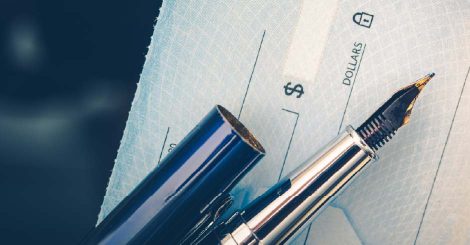Good Debt vs. Bad Debt
Our team at Legacy Bank is helping customers leverage good debts and avoid bad debts by educating borrowers on the key differences!
The Truth About Debt: Understanding Good vs. Bad Debt
Over time, “debt” has become something of a four-letter word. But the truth is, not all debt is necessarily bad. In fact, when used strategically, certain types of debt can help you build wealth and strengthen your financial future. The challenge lies in knowing how to tell the difference between debt that works for you and debt that works against you. At Legacy Bank, our experts are here to help you understand the distinct differences between good and bad debt, so you can make the most informed decisions and leverage debt to your advantage. Here’s what you need to know!
“Good” Debt
So-called “good” debt is typically the kind that works in your favor, helping you grow your wealth, increase your income, or strengthen your overall financial position. In many cases, this type of debt comes with a clear return on investment and favorable terms, such as a low interest rate (generally under six percent). Borrowers who manage good debt responsibly by making payments on time and keeping balances under control can also improve their credit score, which in turn boosts future borrowing power. Key characteristics of good debt include:
- Low Interest Rates
- Increased Earning Potential
- Affordable and Manageable Payments
- Tax Benefits
- Long-Term Financial Gains
Examples: Home mortgages, student loans, business loans, and home equity lines of credit.
“Bad” Debt
“Bad” debt, on the other hand, does little to improve your financial health and can even set you back. This type of debt is often used to finance purchases that lose value over time and provide no increase to your earning potential or net worth. In many cases, bad debt comes with high or variable interest rates, meaning you could end up paying significantly more than the item is actually worth. Simply put, bad debt is the kind you may struggle to repay and that offers no lasting benefit to your financial future. Key characteristics of bad debt include:
- High Interest Rates
- Depreciating Value
- Inability to Repay
- No Return On Investment
Examples: Credit card balances and high-interest personal loans.
How To Avoid Bad Debt
Before taking on any new debt, consider how it aligns with your long-term financial goals. Ask yourself: Will this purchase increase my net worth? Will it enhance my earning potential? If the answer is no, it may be worth reconsidering. At Legacy Bank, we recommend keeping your debt-to-credit ratio (the amount you owe compared to your total available credit) as low as possible—ideally below 30 percent. A lower ratio not only helps maintain a healthy credit score but also signals to lenders that you’re a responsible borrower. To reduce your risk of falling into bad debt:
- Pay down high-interest debts first to minimize the amount you spend on interest.
- Maintain an emergency fund to cover unexpected expenses without relying on credit cards.
- Pay bills on time every month to protect your credit history and avoid late fees.
Contact or Visit Legacy Bank Today!
Legacy Bank is committed to providing the best customer service to meet your banking needs.
View Locations
